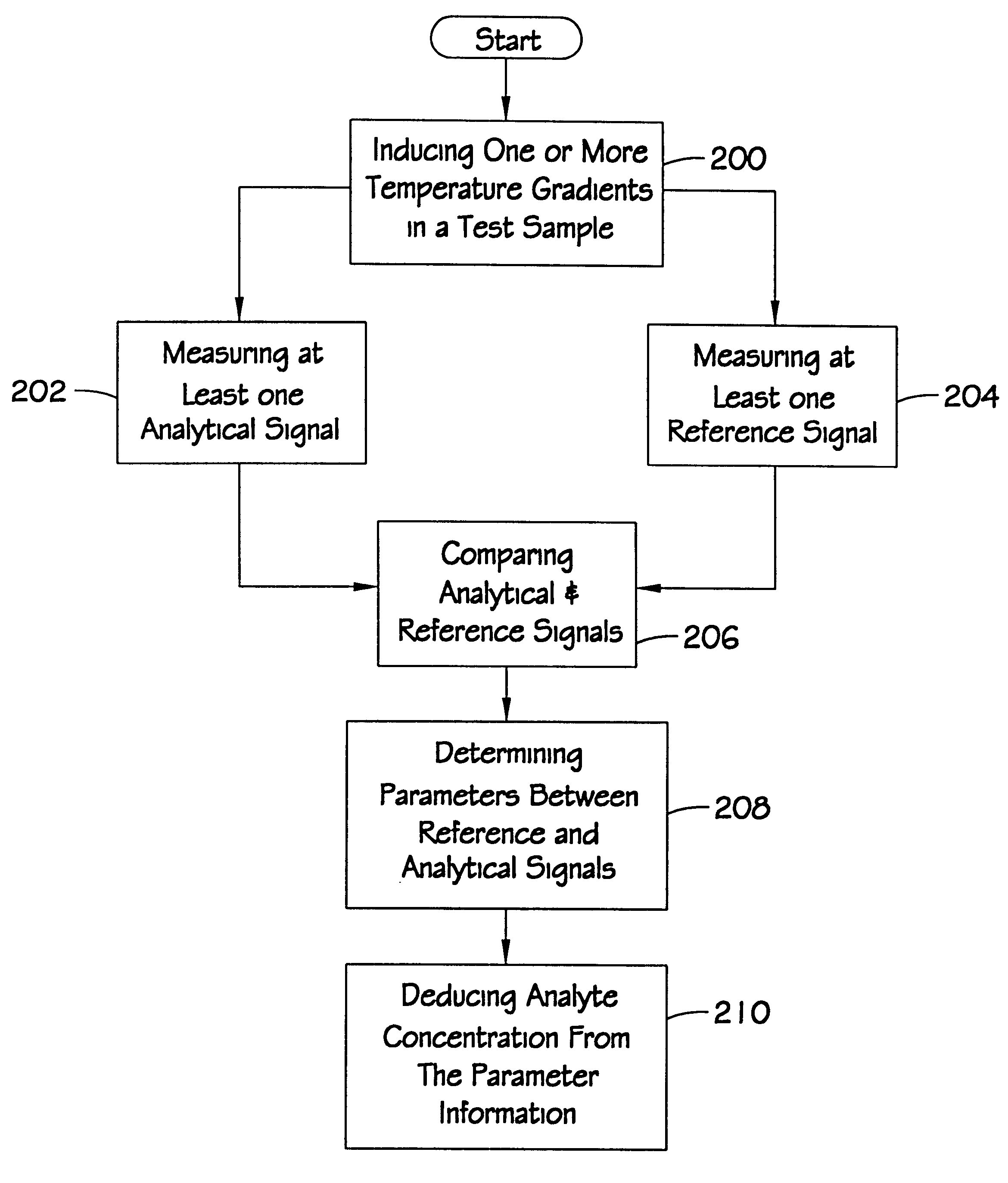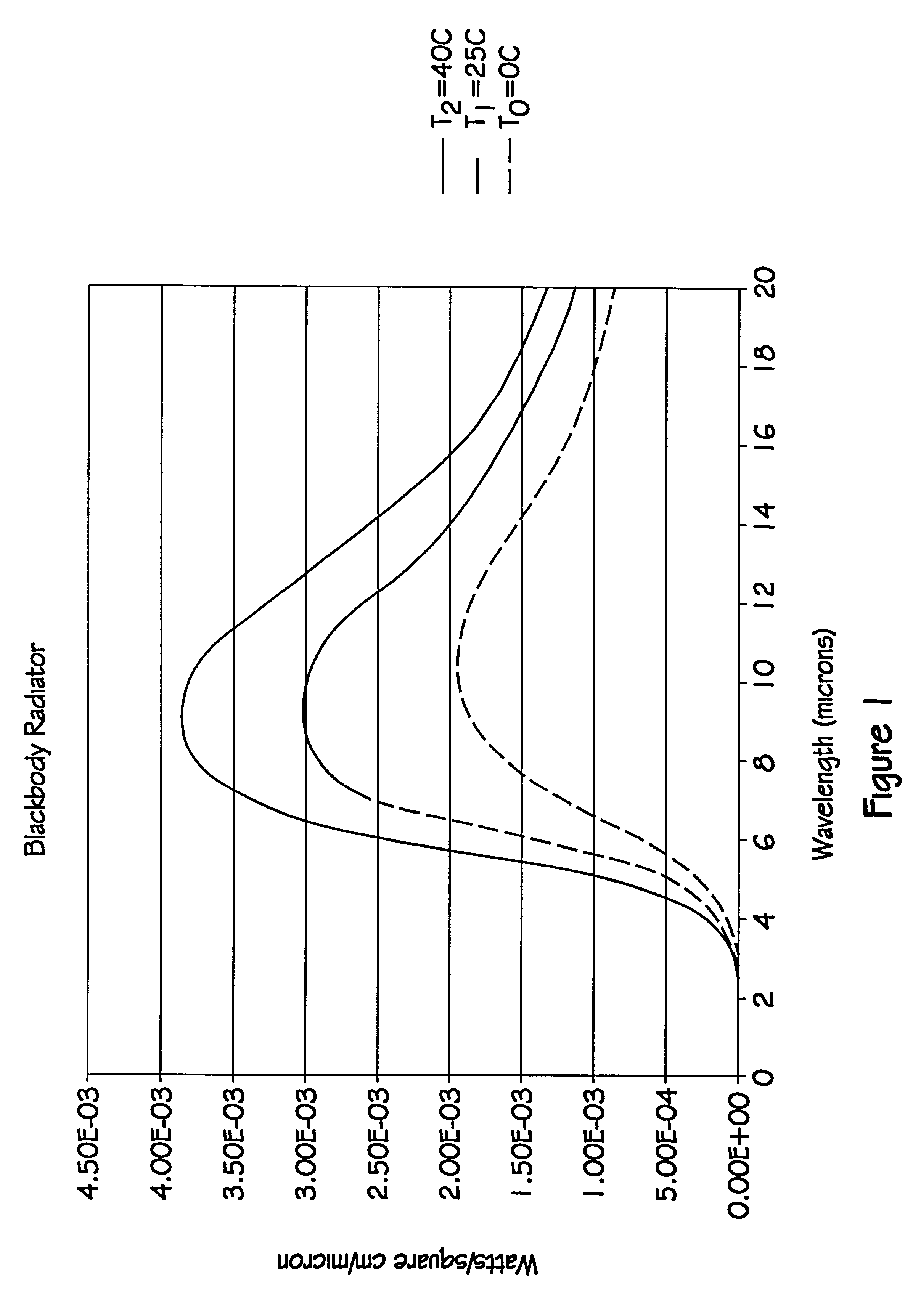Method for determining analyte concentration using periodic temperature modulation and phase detection
a technology of phase detection and periodic temperature modulation, applied in the field of non-invasive testing, can solve the problems of inability to accurately determine the pathlength of the beam used to analyze in-vivo samples, unsuitable non-invasive measurement methods, and inability to extract samples, etc., and achieve the effect of substantially enhancing the accuracy of the method
- Summary
- Abstract
- Description
- Claims
- Application Information
AI Technical Summary
Benefits of technology
Problems solved by technology
Method used
Image
Examples
Embodiment Construction
In its most basic embodiment the present invention provides a method for determining the concentration of chemical analytes in a test sample. The method is typically used in conjunction with a testing apparatus constructed for measuring analyte concentration. As shown in the block diagram of FIG. 7, such an apparatus 70 comprises a thermal gradient inducing means 62, a radiation detector 60, and a data processing means 64 for controlling the gradient and determining analyte concentration based on detector information and predetermined database. One satisfactory apparatus for implementing the method of the present invention is described in Attorney Docket No. P855, entitled "Solid-state Non-invasive Infrared Absorption Spectrometer for the Generation and Capture of Thermal Gradient Spectra from Living Tissue".
In the analysis of test samples the tester typically knows what analytes he is seeking. The analyte sought is identified, and its IR absorbance spectrum analyzed. Analyte absorb...
PUM
| Property | Measurement | Unit |
|---|---|---|
| wavelengths | aaaaa | aaaaa |
| wavelengths | aaaaa | aaaaa |
| temperature | aaaaa | aaaaa |
Abstract
Description
Claims
Application Information
 Login to View More
Login to View More - R&D
- Intellectual Property
- Life Sciences
- Materials
- Tech Scout
- Unparalleled Data Quality
- Higher Quality Content
- 60% Fewer Hallucinations
Browse by: Latest US Patents, China's latest patents, Technical Efficacy Thesaurus, Application Domain, Technology Topic, Popular Technical Reports.
© 2025 PatSnap. All rights reserved.Legal|Privacy policy|Modern Slavery Act Transparency Statement|Sitemap|About US| Contact US: help@patsnap.com



